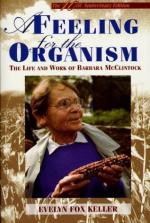
|
| Name: _________________________ | Period: ___________________ |
This quiz consists of 5 multiple choice and 5 short answer questions through Chapter 9, A Different Language.
Multiple Choice Questions
1. What discovery was a great boost to cytological analysis in 1933?
(a) The discovery of the giant salivary gland chromosomes in Drosophila.
(b) The discovery of giant kernal change chromosomes in maize.
(c) The discovery of the small salivary gland chromosomes in Drosophila.
(d) The discovery of small kernal change chromosomes in maize.
2. In A Short History of Genetics, the decade preceding World War II was described as what decade of classical genetics?
(a) The newborn decade.
(b) The climactic decade.
(c) The evolving decade.
(d) The discovery decade.
3. Darlington described that in an adaptive hierarchy the chromosomes always come first. What comes second?
(a) Second generation chromosomes.
(b) Genes.
(c) Organisms.
(d) Transposed cells.
4. What is another word for the process of synapsis?
(a) Metaphase.
(b) Duplication.
(c) Conjugation.
(d) Transfusion.
5. Who wrote the book, Embryology and Genetics?
(a) C.D. Darlington.
(b) Barbara McClintock.
(c) T.H. Morgan.
(d) L.C. Dunn.
Short Answer Questions
1. How did Evelyn Witkin say she learned from Barbara and developed her own understanding from her?
2. In what year was the First Oxford Chromosome Conference held?
3. Who was quoted as saying, "By God, that woman is either crazy or a genius."?
4. In Chapter 9, Evelyn Keller states that both science and art are dependent on what?
5. How many kinds of nuclear division do cells undergo?
|
This section contains 251 words (approx. 1 page at 300 words per page) |

|




